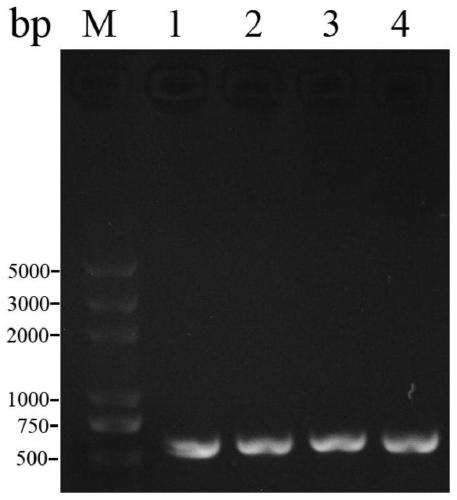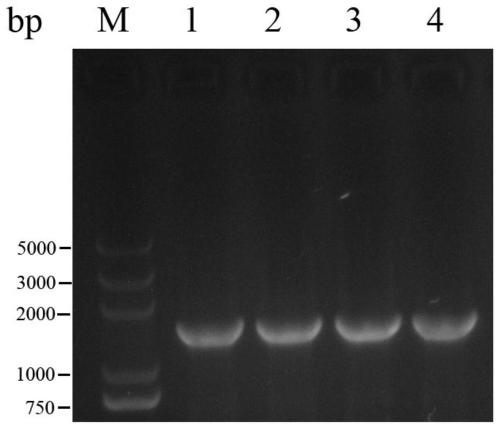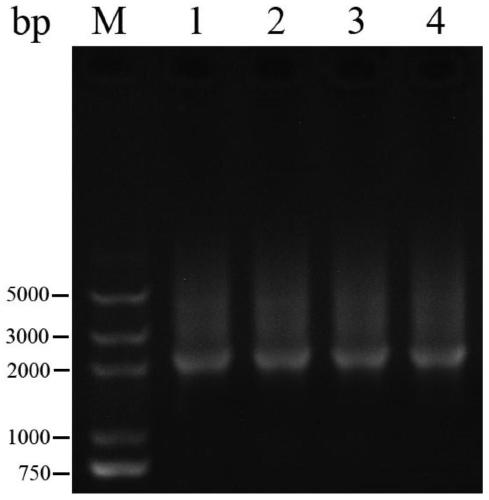A gene regulating long-chain fatty acid transport in Candida tropicalis and its application
A technology of Candida tropicalis and long-chain fatty acids, which is applied in the fields of application, genetic engineering, plant genetic improvement, etc.
- Summary
- Abstract
- Description
- Claims
- Application Information
AI Technical Summary
Problems solved by technology
Method used
Image
Examples
Embodiment 1
[0035] Example 1 Search and analysis of Candida tropicalis long-chain fatty acid gene
[0036] At present, there are very few studies on long-chain fatty acid transporters. It is known that there is only a special long-chain fatty acid transporter in Saccharomyces cerevisiae that is responsible for the transmembrane transport of long-chain fatty acids, while similar genes in Candida tropicalis have not been reported. Using the Saccharomyces cerevisiae fat1p gene as a template to query the NCBI database, it can be seen that there is a similar gene sequence in the genome of Candida tropicalis, its sequence is shown in SEQ ID NO.1, and the encoded protein has a sequence identity of 59.7% with that of Saccharomyces cerevisiae fat1p %, presumably related to long-chain fatty acid transport.
Embodiment 2
[0037] Example 2 Verification of Candida tropicalis fat1p gene function
[0038] 1. The construction method of Candida tropicalis genetically engineered recombinant bacteria, the steps are as follows:
[0039] (1) Extract the genomic DNA of Candida tropicalis (Candida tropicalis) thallus, and use the genomic DNA as a template to perform PCR amplification to obtain the homology arm Fat1p1 with a length of 551bp, such as figure 1 As shown, the PCR primer sequences are as follows:
[0040] Fat1p F 1 :G GAATTC AGACCAAGAAAGAATGCACCA;
[0041] Fat1p R 1 :CAACGGCCTCAACCCCAAGACATGATACCTGCT;
[0042] Wherein, the underline is marked as the EcoR I restriction site;
[0043] The PCR amplification system is 50 μl:
[0044] 2×HiFi-PCR master 25μl, primer Fat1p F at a concentration of 10μmol / L 1 2.5 μl, primer Fat1p R at a concentration of 10 μmol / L 1 2.5 μl, template 2.5 μl, with ddH 2 O make up 50 μl;
[0045] The PCR amplification procedure is as follows:
[0046] Pre-denatu...
Embodiment 3
[0099] On the basis of obtaining the full-length Fat1p gene, specific primers were designed to clone the target gene, and the vector and the target gene were configured into a recombination reaction system through seamless cloning technology to carry out the recombination reaction. Transform into DH5α competent medium, and screen positive clones. After the sequencing was correct, the extracted plasmid was electrotransformed into competent Candida tropicalis. Fermentation verification of the effect of increasing the copy number of Fat1p gene on the rate of cell oil absorption. The core of its technology is to use the principle of homologous recombination to linearize the vector, and introduce the terminal sequence of the linearized vector at the 5' end of the PCR primer of the insert fragment, so that the 5' and 3' ends of the PCR product are respectively equipped with the linearized vector Consistent sequences at both ends (15bp-20bp). After the PCR product with carrier end ...
PUM
 Login to View More
Login to View More Abstract
Description
Claims
Application Information
 Login to View More
Login to View More - R&D
- Intellectual Property
- Life Sciences
- Materials
- Tech Scout
- Unparalleled Data Quality
- Higher Quality Content
- 60% Fewer Hallucinations
Browse by: Latest US Patents, China's latest patents, Technical Efficacy Thesaurus, Application Domain, Technology Topic, Popular Technical Reports.
© 2025 PatSnap. All rights reserved.Legal|Privacy policy|Modern Slavery Act Transparency Statement|Sitemap|About US| Contact US: help@patsnap.com



